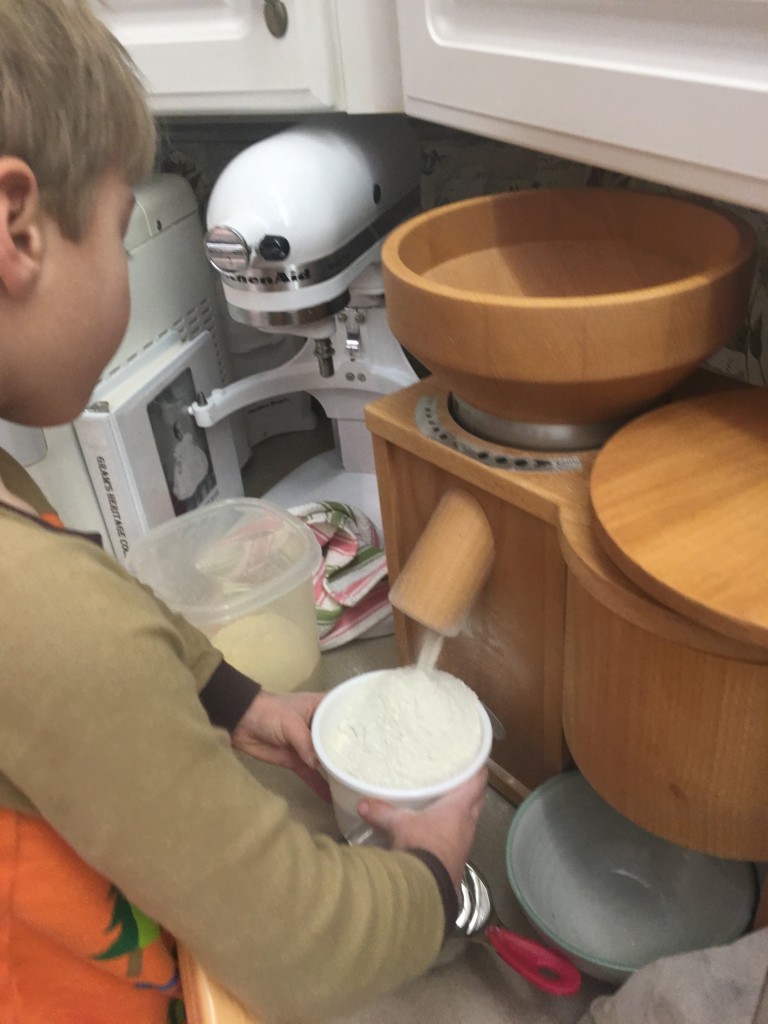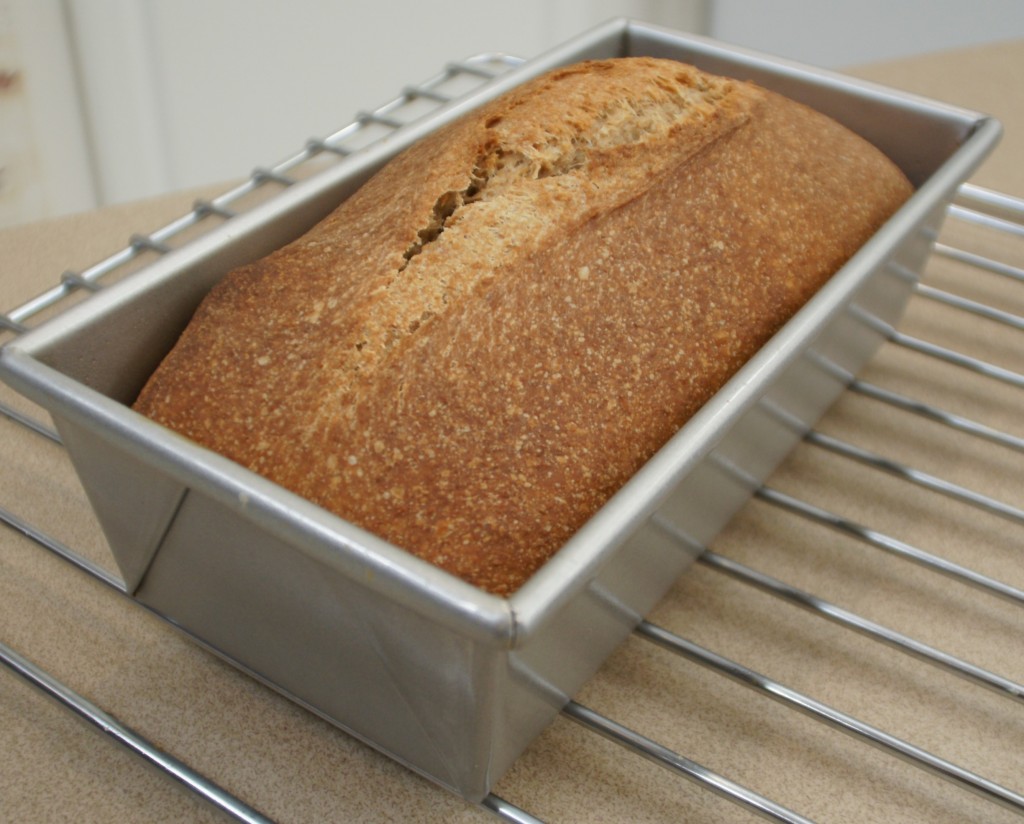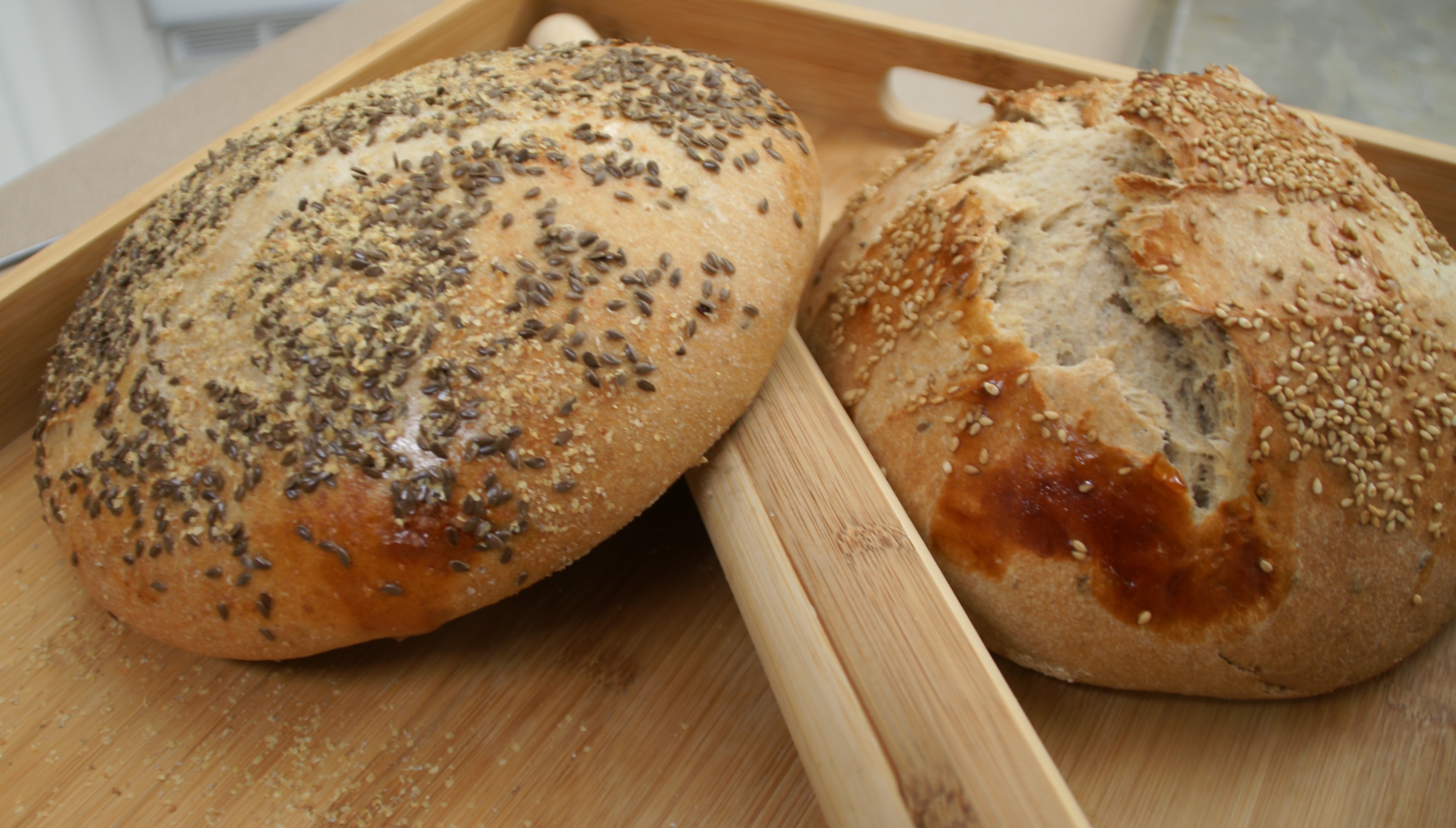Ancient grains like spelt, leavened with wild yeasts found in sourdough cultures, produce bread that fits on a low FODMAP diet. Those suffering from IBS (irritable bowel syndrome) or gastrointestinal (GI) problems after eating processed foods or gluten may actually be reacting to fructans. Wheat (along with onions) is thought to contribute 95% of the fructans that can cause GI distress. Fructans are carbohydrates that require an enzyme to breakdown. If this enzyme is not available to breakdown the chains of fructose, fructans can cause discomfort.
Spelt is an ancient grain mentioned in the bible as one that can be grown even during a drought. So even though it is a type of wheat, it contians fewer fructans than other varieties of wheat. The fermentation process that occurs when wild yeasts are used in spelt bread further breakdown any naturally ocurring fructans. The result is a bread that fits well on a low FODMAP diet.
Most spelt bread found in bakeries or grocery stores have only a small amount of spelt flour in them. The rest contain all sorts of grains that do not fit in a low FODMAP diet. Making your own 100% spelt sourdough bread takes just a few special ingredients and only a little hands on time. Spelt flour is found in most grocery stores or markets that sell specialty flours. I grind my own flour using whole spelt berries from the field or grocery store. It is so amazing for kids and even adults to watch those tiny berries of spelt turn into a flowing river of flour.

Spelt has several unique characteristics. Spelt flour absorbs more water than other grains so the dough has a higher hydration and will be slightly stickier than other bread doughs. Spelt has fewer fructans than other wheat and those are broken down further during the long fermentation period by the bacteria in a sourdough culture. Refrigerating the dough after it is kneaded is the best way to create the perfect atmosphere for fermentation to take place.
Spelt can be sprouted, rolled like oats or soaked to be used in recipes. For this bread, the spelt is milled into flour and used just like any other flour.

Spelt bread takes a little longer to bake because of the higher level of hydration. The most reliable way to tell when the bread is done is to use a thermometer to determine the internal temperature. Many experts recommend whole grains be baked to 205 degrees but that really depends on how tight the crumb is. This loaf of spelt sourdough was removed from the oven when it reached 200 degrees. The crumb was moist but not doughy.

Spelt bread can be baked in a multitude of shapes. The recipe is perfect for one 9 x 5-inch loaf pan or it can be shaped into two round balls. Slash the top of the loaves to allow for oven spring, that instantaneous rise when the dough hits the heat of the oven. The slash in the top of the dough gives a place for the bread to rise.

Whole grain breads are known for having a tighter, denser crumb. Several ingredients in this recipe give spelt bread a great flavor and texture. Orange juice contains vitamin C which helps give a good rise to each loaf. Vital wheat gluten is added to give more strength to the cells. The sourdough culture helps increase the keeping quality of the bread. The potato flakes act as a dough conditioner. All of these together produce a great-tasting loaf.


100% Spelt Sourdough Bread
1 cup spelt sourdough starter
3 cups spelt flour
1/2 cup water
2 tablespoons orange juice
1/4 cup non-fat dry milk powder
1 1/2 teaspoons salt
2 tablespoons instant potato flakes
2 tablespoons honey
2 tablespoons melted butter
Combine all ingredients in a mixing bowl, mixing well. Knead until mixture forms a slightly sticky, smooth dough about 5 to 8 minutes. Place in a greased bowl and turn to bring greased side up. Cover with plastic wrap and store in refrigerator overnight or about 8 to 12 hours.
Form dough into a loaf or two round boules. Place in a greased loaf pan or baking pan. Cover with plastic wrap. Let rise for several hours or until almost double in size.
Bake in 375° oven for 40 to 45 minutes for loaf shape or until internal temperature reaches 200°. Two smaller, round boules will bake in about 30 to 35 minutes. Let cool in the pan about 10 minutes and turn out onto a wire rack. Slice and serve warm or store in an airtight container when cool.


8 Comments